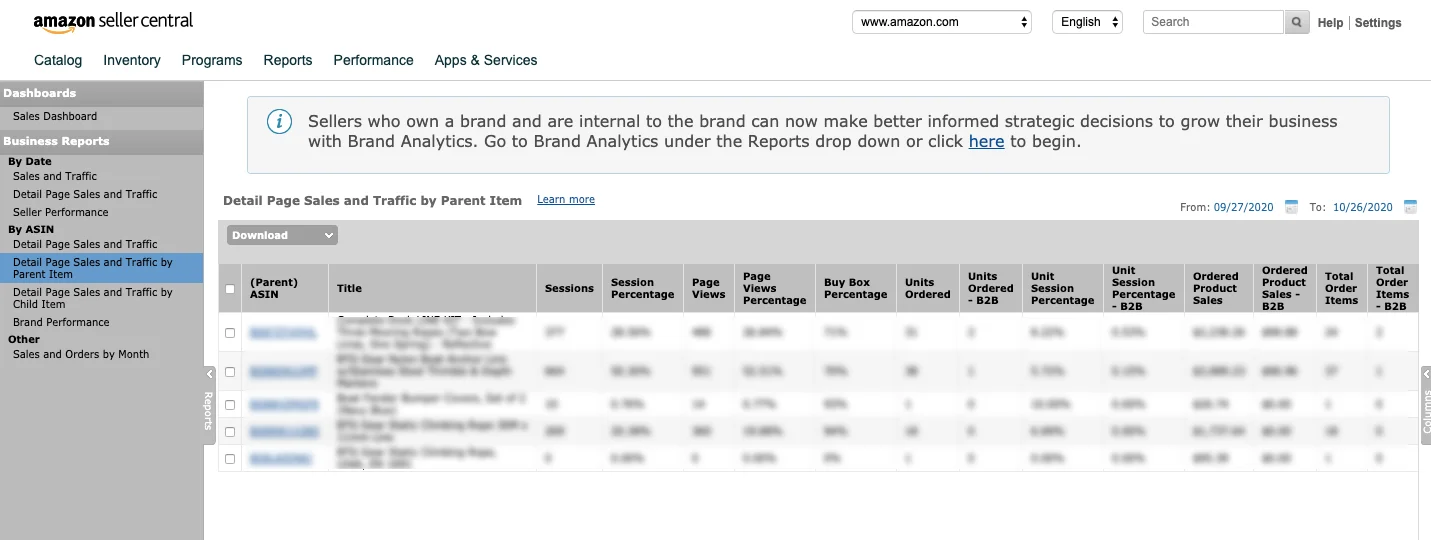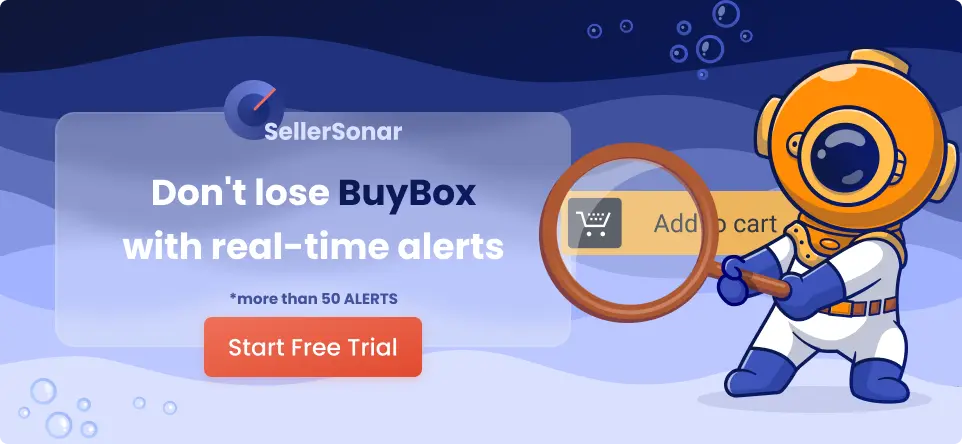Table of Contents
- 1 What Is Amazon Conversion Rate?
- 2 What Is A Good Conversion Rate For Different Industries?
- 3 How to Calculate Conversion Rate?
- 4 What Is a Proper Conversion Rate on Amazon?
- 5 How To Find out Conversion Rates on The Amazon Platform?
- 6 How To Monitor Your Conversion Rate on Amazon?
- 7 How to Increase Conversion Rate on Amazon?
- 8 Final Thoughts
We generally welcome more people to our product listing, but getting relevant shoppers is more crucial than simply having more visitors landing on our page of Amazon search results without further action. How many are purchasing among the hundreds or thousands of people who click on your Amazon listing? Having only five visitors daily, with all buying products, is far better than having a hundred visitors with only two purchases.
Getting traffic to your page of Amazon search results is one thing. Getting the right traffic is another. There comes an underlying danger when you welcome all types of traffic with open arms. Keep in mind that it will influence your conversion rate and Amazon seller ranking.
In this post, you will learn what the CVR metric on Amazon should be, how vital it is to increase your conversion rate, and how to do so for little cost.
What Is Amazon Conversion Rate?
Let’s start with the definition. The seller’s conversion rate is the percentage of Amazon ad clicks that convert into sales. Basically, this indicator demonstrates how many visitors buy a product directly after checking your listing. You can spot potential issues hindering your sales.
What Is A Good Conversion Rate For Different Industries?
A healthy conversion rate typically falls between 2% and 5%. Even a 0.5% increase can significantly impact results. Additionally, it’s worth noting that top brands often achieve superior outcomes.
Conversion Rate by Industry
Now, let’s discuss a good conversion benchmark for e-commerce websites.
Here’s a quick breakdown to understand the varying performance rates across different industries:

As shown, e-commerce success rates lag behind finance, particularly at the top tier, while B2B sites tend to perform better. This trend is consistent across all tiers. If your rate is around 4%, you’re average; hitting 6.5% places you in the top tier, but a rate around 1% is a significant red flag.
This comparison can help you determine your position. However, it’s important to note that an e-commerce business with a rate of 3.71% might generate more revenue than a legal services company boasting a rate of 6.56%. The reason is straightforward: the legal niche attracts fewer customers, while e-commerce retail on platforms like Amazon is likely to draw in more visitors.
How to Calculate Conversion Rate?
To calculate the conversion rate, divide the number of conversions (sales) by the total number of visitors to your Amazon listing, then multiply by 100 to get a percentage.
Conversion Rate = (Number of Sales / Total Number of Visitors) * 100
For example, if you had 500 visitors and made 25 sales, your conversion rate would be:
(25/500) * 100 = 5%
This means that for every 100 visitors to your Amazon page, approximately 5 will make a purchase. By calculating the conversion rate accurately, Amazon algorithms will reward your listing with better visibility and higher rankings.
What Is a Proper Conversion Rate on Amazon?
Now that you know reasonable for different industries, how can you assess whether your Amazon metrics are good or bad? What is a good sales conversion rate on Amazon? The best way is to compare it against the platform’s numbers.
The Amazon marketplace has some of the highest indicators among all e-commerce platforms — that’s why companies are so willing to sell there. As a rule, decent conversion rates for a non-Prime seller on Amazon are between 10-15%. However, this number falls to 3.32% among the Top 500 sellers due to how they are viewed. The CVR Amazon is even juicier regarding Amazon Prime clients, 74%.
It’s important to mention that a good conversion rate and lift factor vary per product per niche. For instance, more expensive products ($100 and above) will usually have a lower indicator because clients tend to shop around and compare these items to similar goods before making final purchase on Amazon.
A good conversion rate also depends on the sample size. For example, you might get ten conversions out of twenty-page visits, but even though your CVR Amazon is at 50%, you have still only made ten sales, which is not as great for your total revenue. Whereas you might have 100 views with 20 conversions, making your average conversion rate seem worse at 20%, but in fact, it’s twice as much of the sales from the previous example.
How To Find out Conversion Rates on The Amazon Platform?
The CVR Amazone is the total number of page views divided by sales transactions. However, where exactly can you get the data for this?
Firstly, log in to your Seller Central account on Amazon and hover the cursor over the Reports tab. Then, click on Business Reports to see your Sales Dashboard.

Next, visit the Details Page Sales and Traffic by Parent Item. In this section, you will see a table with several columns. We are interested in two of them: Total Order Items and Sessions. Set the time range you wish to analyze. The default is last month. Now you can calculate your conversion rate for each parent ASIN with the following formula:
Conversion Rate = (Total order Items) / Sessions
Amazon defines a session as “total visits to your product pages for a certain time.” It differs from page views which measure the number of page views your items have gotten during the date range set.
So if a client arrives at your page, goes to another seller’s page, and then returns to yours, that counts as only one product listing session but two page views.
How To Monitor Your Conversion Rate on Amazon?
The platform’s conversion tracking involves only a couple of steps:
- Go to Reports and then click Business Reports.
- Check your traffic and sales.
- Find the row named Unit Session Percentage. Here, you will have your conversion rate for all the items.
- Open Detail Page Sales and Traffic page in the By ASIN section.
How to Increase Conversion Rate on Amazon?
Estimating your conversion rates is essential to see how your company is doing in terms of sales. It also influences your e-commerce business and brand decisions.
If you think that there are some possible pitfalls, follow these tricks to grow your conversion rates:
Carry out keyword research
If the results show good traffic while estimating your conversion rates, the next step is to draw a higher click rate to the product listings.
The best way to achieve this is to perform keyword research. Ranking your goods for related keywords or search terms on the Amazon SERPs (Search Engine Result Pages) gains three things:
- Visibility
- Traffic
- Sales
Once you pick the right keywords for уour item, you should integrate the keywords in:
- Product title
- Product description
- Bullet points
Nonetheless, you can guess the keywords your clients use to search for your goods, but…You aren’t your clients. The only way to test your ideas is to use an Amazon keyword rank checker. SellerSonar monitors historical keyword performance and helps you stay updated on your customers’ behavior patterns.
Develop compelling product descriptions
Usually, product descriptions are one of the most ignored aspects during conversion rate optimization. However, keep in mind that a potential customer will read through this section and decide.
Thus, aim to make your product description as follows:
- Attractive enough to make a sale
- Simple to read and understand
- Containing detailed and helpful info about the product
Use benefit-oriented bullet-points
Your listing’s bullet points might simplify the reading process and help shoppers identify the critical product features. But don’t add too many bullet points. According to experts, five is a safe number for your bullet list. Besides, it’s crucial to end your product bullet points with a direct CTA (call-to-action) (i.e., Buy Now, Order Today, etc.).
Add high-quality pictures
It’s the first thing that clients look for when they reach your product listing. If they are not attractive, shoppers will never go through other elements (description, bullet points, product details, FAQs, and so on).
To ensure a high conversion rate, make sure that your product images are:
- Clear, with a white background
- High quality
- Relevant and demonstrating product features
No matter how incredible your goods are, you have lost if you fail to keep your pictures attractive.
Keep your price reasonable
An excellent way to optimize your listings is to set competitive prices. Start with checking your competitors’ prices. Remember that lowering prices isn’t always a solution due to 2 reasons:
- Cheap often doesn’t mean quality
- Profit is much more important than conversions
While calculating the price, undertake A/B testing and check what works best for you. Try offering discounts or running promotions to boost sales.
Follow up your customers with emails
The moment a client purchases your product, nurture this association. Your existing customers are the ideal assets to promote your goods – because they’re the ones who purchased your items and used them.
Thus, such clients can pave the path for promotion. However, don’t bombard them with emails. Instead, show that you truly care about them.
Start with a simple letter right after the purchase and ask if your customers are satisfied with your product. Let them know you’re open to queries and concerns. Then, add an email link to share their feedback or reviews based on their experience.
Besides, adding a discount code to the email might be a fantastic idea, as this promotes a second purchase.
Grow your number of customer reviews
From a client viewpoint, as well as a product optimization perspective, reviews are priceless. For buyers, they offer an unbiased understanding of your item’s quality. Meanwhile, AMZ uses reviews to recommend and rank the best goods and merchants to users.
Invest in feedback management if your brand wants to raise its conversion rate.
Use feedback generation services compliant with Amazon or solutions offered by the marketplace, like the Early Reviewer Program or Amazon Vine, to generate more reviews for your items. While they all require financial investment, these tools can help get essential reviews to move new products.
In addition to working to generate more customer reviews, your team should also reply to reviewers. Whether people had a great or poor experience with your item, we recommend responding and handling any issues.
This proactive measure can help your company build brand loyalty and brand awareness. And, as a result, enhance the bottom line. For instance, a loyal customer may recommend your item while another buyer may decide to buy your product.
Final Thoughts
Maintaining a strong conversion rate on Amazon and other platforms is essential for maximizing profits. A low conversion rate leads to lost sales and wasted spending. If you’re already driving traffic to your Amazon product listing, taking a few extra steps to turn that visibility into sales is worthwhile. SellerSonar algorithms continuously monitor and analyze data from Amazon, generating alerts and notifications for your products. With our Amazon tracker, you can assess how changes on the product detail page impact your listings’ performance and sales.
Register for SellerSonar’s 29-day free trial now and get automated Amazon listings monitoring and account management!


